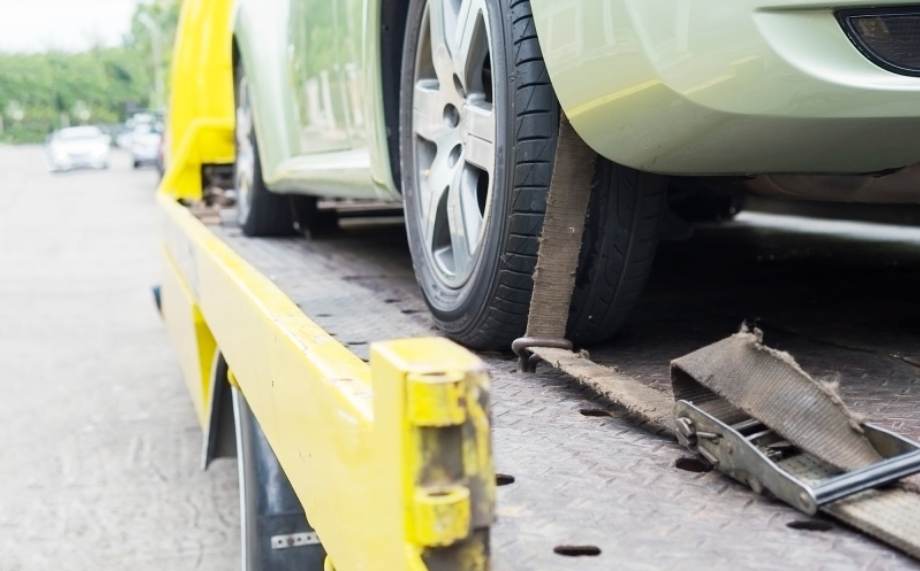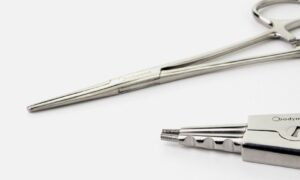When I first started working with car transport trailers, I’ll be honest – I made more mistakes than I care to admit. There’s something about loading a valuable vehicle onto a trailer that can make even experienced drivers second-guess themselves. But here’s the thing: most accidents and damage could have been prevented with proper knowledge and preparation.
Car transport trailers are incredibly useful tools, whether you’re moving your classic car to a show, transporting a non-running vehicle, or relocating across the country. However, they require respect and understanding to operate safely. In my experience, the difference between a successful transport and a costly disaster often comes down to avoiding some very common – yet completely preventable – mistakes.
Let me walk you through the most critical errors I’ve seen (and sometimes made myself) over the years, along with practical solutions to keep your vehicle and everyone on the road safe.
Choosing the Wrong Trailer Type for Your Vehicle
One of the biggest mistakes I see is people grabbing whatever trailer is available without considering their specific needs. Not all car transport trailers are created equal, and using the wrong type can lead to serious problems.
Understanding Weight Capacity Limits
This might seem obvious, but you’d be surprised how many people overlook gross vehicle weight rating (GVWR). I once watched someone attempt to load a heavy SUV onto a trailer rated for compact cars – the results weren’t pretty. Always check your vehicle’s curb weight against the trailer’s capacity, and remember to account for fuel, cargo, and passengers if applicable.
The math is straightforward: your vehicle’s weight plus the trailer’s weight must not exceed your tow vehicle’s towing capacity. When in doubt, err on the side of caution. It’s better to rent a larger trailer than risk equipment failure or legal issues.
Selecting Between Open and Enclosed Options
Weather protection is another crucial consideration. Open trailers work fine for short distances in good weather, but if you’re transporting a classic car or traveling through unpredictable conditions, an enclosed trailer might be worth the extra cost. I learned this lesson the hard way during an unexpected hailstorm – let’s just say my client wasn’t thrilled with the dimpled hood.
Improper Loading Techniques That Cause Damage
Loading seems straightforward until something goes wrong. The key is taking your time and following proper procedures every single time.
Incorrect Approach Angles
Many people rush the loading process and approach the trailer at the wrong angle. Your vehicle should be perfectly aligned with the trailer’s centerline before you start driving up the ramps. Even a slight angle can cause the tires to slip off the edge or create uneven weight distribution.
I always recommend having a spotter guide you during loading, especially if you’re new to this process. They can see things you can’t from the driver’s seat and help ensure you’re staying centered.
Rushing the Loading Process
Speaking of taking your time – this isn’t a race. I’ve seen too many people gun it up the ramps, only to slam on the brakes when they realize they’re going too fast. This sudden deceleration can damage both the vehicle and trailer.
Drive slowly and steadily. Your vehicle should barely be moving as it climbs the ramps. If your engine is working hard or you hear unusual noises, stop and reassess the situation.
Ignoring Ground Conditions
Always check the ground where you’re loading. Soft soil, gravel, or uneven surfaces can cause the trailer to shift during loading. I once had a trailer sink into soft ground just as I was loading a car – it created a dangerous angle that could have resulted in the vehicle sliding off.
Inadequate Securing and Tie-Down Methods
This is where I see the most dangerous mistakes. Proper securing isn’t just about preventing your car from moving – it’s about physics, weight distribution, and understanding how forces work during transport.
Using Wrong Tie-Down Points
Never, and I mean never, secure your vehicle using bumpers, spoilers, or other non-structural components. These parts aren’t designed to handle the forces generated during transport and can break, potentially causing your vehicle to shift or even come loose.
Instead, use designated tie-down points, which are usually reinforced areas of the frame or suspension components. If you’re unsure where these are located on your specific vehicle, consult the owner’s manual or ask a professional.
Insufficient Number of Tie-Downs
The minimum is typically four tie-down points – one at each corner of the vehicle. However, depending on the vehicle’s weight and the distance you’re traveling, you might need more. I generally recommend six to eight tie-down points for valuable or heavy vehicles.
Incorrect Tension and Angles
Tie-downs should be tight enough to prevent movement but not so tight that they damage the vehicle or create stress points. The angle is crucial too – aim for approximately 45 degrees from the trailer deck to the tie-down point. This provides the best combination of downward and rearward force.
Weight Distribution and Balance Problems
Poor weight distribution is a recipe for disaster. It affects everything from how your tow vehicle handles to tire wear and fuel consumption.
Front-to-Rear Balance Issues
The general rule is that 60% of the trailer’s weight should be in front of the axles, with 40% behind. This creates proper tongue weight – typically 10-15% of the total trailer weight. Too much weight in the back can cause dangerous swaying, while too much in front can lift your tow vehicle’s rear wheels, reducing traction and steering control.
Side-to-Side Weight Distribution
Don’t forget about lateral balance. If you’re transporting multiple vehicles or have cargo, ensure the weight is evenly distributed from side to side. Uneven lateral weight can cause tire wear, handling problems, and increased risk of rollover.
Understanding Tongue Weight
Tongue weight is critical for safe towing. Too little, and the trailer will sway. Too much, and you’ll overload your tow vehicle’s rear axle. I always recommend using a tongue weight scale – it’s a small investment that can prevent major problems.
Neglecting Pre-Transport Vehicle Preparation
Proper preparation can prevent many issues during transport. It’s not just about the mechanical aspects – there are practical considerations too.
Fluid Level Checks
Check all fluid levels before loading. Low brake fluid, for instance, could be a sign of a leak that might worsen during transport. I also recommend checking tire pressure – properly inflated tires are less likely to develop flat spots during long transports.
Battery and Electrical System Preparation
If you’re transporting a non-running vehicle, consider disconnecting the battery to prevent drain. For running vehicles, ensure the electrical system is functioning properly – you might need to move the vehicle during the trip.
Personal Items and Fuel Considerations
Remove all personal items from the vehicle. Not only can they shift during transport and cause damage, but they also add unnecessary weight. As for fuel, keep the tank as low as possible while still having enough to drive on and off the trailer. Fuel is heavy and affects weight distribution.
Towing Vehicle Compatibility Issues
Your tow vehicle is just as important as the trailer itself. Mismatched combinations are dangerous and can lead to mechanical failures.
Insufficient Towing Capacity
This goes beyond just gross weight. Consider your tow vehicle’s engine size, transmission type, cooling system, and braking capacity. A vehicle might technically be able to pull a certain weight, but that doesn’t mean it can do so safely, especially in challenging conditions like mountain passes or stop-and-go traffic.
Improper Hitch Setup
The hitch system is your critical connection point. Weight distribution hitches are often necessary for heavier loads, and they must be properly adjusted. I’ve seen people use the wrong ball size or forget to engage safety chains – both potentially catastrophic mistakes.
Brake Controller Configuration
If your trailer has electric brakes, your tow vehicle needs a properly configured brake controller. This isn’t a set-it-and-forget-it device – it should be adjusted based on load weight and road conditions.
Safety Equipment and Legal Compliance Oversights
Legal requirements vary by location, but safety should be universal. Don’t let compliance issues turn your transport into a legal nightmare.
Missing Required Safety Equipment
Safety chains are mandatory in most jurisdictions, and they must be properly rated and connected. Breakaway systems are required for trailers over certain weights. Lighting systems must be functional – not just the basics, but turn signals, brake lights, and hazard flashers.
Licensing and Insurance Gaps
Check whether your regular auto insurance covers trailer use and transported vehicles. Some policies have exclusions that could leave you financially exposed. Additionally, some areas require special licenses for larger trailers – know the rules before you hit the road.
Inspection and Maintenance Requirements
Regular inspections aren’t just good practice – they’re often legally required. This includes checking tire condition, bearing lubrication, brake adjustment, and structural integrity. I keep a maintenance log for all my trailers, which helps track service intervals and can be valuable for insurance purposes.
Route Planning and Driving Technique Errors
The journey is just as important as the preparation. Poor route planning and driving techniques can turn a routine transport into a stressful ordeal.
Ignoring Height and Weight Restrictions
Not all roads are suitable for trailer combinations. Low bridges, weight-restricted roads, and narrow passages can create serious problems. I always use truck-specific GPS systems or apps that account for vehicle dimensions and weight.
Inadequate Speed Management
Trailers change everything about how your vehicle handles. Acceleration is slower, braking distances are longer, and crosswinds have more effect. I generally drive 5-10 mph below the speed limit when towing, and I slow down even more in adverse conditions.
Poor Weather Preparation
Weather can turn a routine trip dangerous quickly. Rain reduces traction, wind causes swaying, and temperature changes affect tire pressure. I always check weather forecasts and have contingency plans for severe conditions.
Maintenance and Storage Mistakes
Proper maintenance extends trailer life and ensures safety. Neglecting maintenance is a false economy that often leads to expensive repairs or replacements.
Neglecting Regular Inspections
Trailers don’t get daily use like cars, which means problems can develop unnoticed. I inspect my trailers before every use and perform more thorough checks monthly. This includes checking tire pressure and condition, bearing lubrication, brake adjustment, and structural components.
Improper Storage Practices
How you store your trailer affects its longevity. Trailers should be stored on level ground with the tongue supported. Tires should be protected from UV exposure, and moving parts should be lubricated periodically. If you’re storing for extended periods, consider removing the wheels to prevent flat spots.
Ignoring Manufacturer Guidelines
Every trailer comes with specific maintenance requirements from the manufacturer. These aren’t suggestions – they’re requirements for safe operation and warranty compliance. Keep maintenance records and follow recommended service intervals.
When it comes to quality släpvagnar, investing in proper equipment from reputable manufacturers makes a significant difference in both safety and longevity. Similarly, if you’re specifically looking for biltransport solutions, choosing the right trailer for your specific needs is crucial.
Conclusion
Car transport trailers are incredibly useful tools when used properly, but they demand respect and knowledge. The mistakes I’ve outlined here aren’t just theoretical – they’re real problems I’ve encountered in the field. The good news is that they’re all preventable with proper preparation, equipment, and technique.
Remember, there’s no shame in asking for help or taking extra time to do things right. The cost of proper preparation is always less than the cost of fixing mistakes. Whether you’re a weekend warrior transporting your project car or a professional moving vehicles regularly, these principles will serve you well.
Stay safe out there, and remember – when in doubt, slow down, double-check your work, and don’t hesitate to seek professional advice. Your vehicle, your wallet, and everyone else on the road will thank you for it.





























